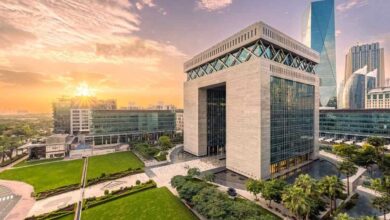
- Safety concerns arise as construction sites are affected by flooding, necessitating additional precautions and measures to ensure the well-being of workers.
How UAE’s recent floods will impact construction projects
The UAE was hit by record rains on April 16, the worst storm since record-keeping began in the country with more than a year’s worth of rain falling over the course of 24 hours. The exceptional weather conditions brought the country to a standstill due to road closures and caused millions worth of damage to infrastructure and property.
Several construction projects in the UAE will be affected, with huge potential for delays and damage to ongoing works. Parties to construction contracts must carefully consider their respective positions under their contract. What happens next largely depends on how these contracts have been drafted and their subsequent interpretation.
Contractors may be entitled to an extension of time to completion where project delays are caused by unexpected adverse weather events. The FIDIC Red and Yellow Books for example, provide for extensions of time under Clause 8.5(c), where the delay is caused by “exceptionally adverse climatic conditions”.
These are described under the contract as adverse climatic conditions which are ‘unforeseeable’ having regard to climatic data made available by the employer and/or climatic data published in the country for the geographical location of the site.
The approach regarding entitlement to costs due to adverse weather is perhaps more variable between different contracts. Standard form construction contracts such as NEC4 expressly provide for an extension of time and reimbursement of additional costs due to extreme weather events. This is not the case in the FIDIC Red and Yellow Books which only provide for an extension of time.
The FIDIC Red and Yellow Books do, however, provide for the costs of rectifying loss or damage. In particular, they provide that a contractor shall have no liability whatsoever for loss or damage caused by any “operation of the forces of nature … which is ‘unforeseeable’ or against which an experienced contractor could not reasonably have been expected to have taken adequate preventative precautions”.
This is very important because claims for defects and damages will be likely more prevalent than extensions of time.
The foreseeability threshold with respect to weather events is not straightforward. Historic weather patterns vary considerably, and extreme weather events are becoming increasingly common due to climate change.
Moreover, with advances in weather detection and communication, we know more about the timing and extent of such events earlier and in more detail than ever before. Accordingly, it is not a foregone conclusion that a weather event, even of this magnitude, would be considered as unforeseeable.
Many construction contracts in the Middle East include an express requirement on the contractor to mitigate any delays, loss and/or damage. Even where there is no express requirement under the contract, courts and tribunals will usually take this into account.
With advanced warning, contractors will be expected to have taken mitigation measures before the weather event, for example, by rescheduling tasks, securing loose materials, protecting and bracing unfinished work while ensuring adequate drainage systems are in place.
Employers and contractors must also ensure that they understand notice provisions under their contracts. Contractors must provide reasonable substantiation to show that the delay, loss and/or damage arose directly from the weather event.
Under the FIDIC Red and Yellow Books contractors are required to submit a notice as soon as practicable, and no later than within 28 days after it became aware, or should have become aware, of the event.
The recent extreme and record-breaking rainfall undoubtedly impacted construction projects across the UAE. Parties should check the express wording of their contracts to confirm whether they are entitled to any relief and if so, the process for obtaining such relief.





